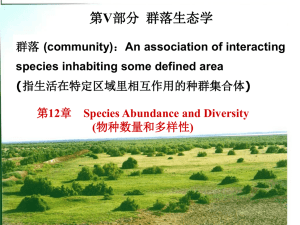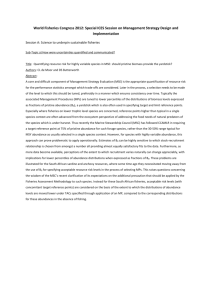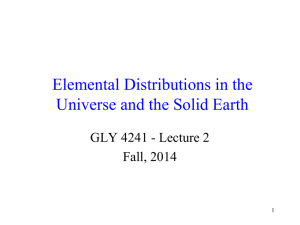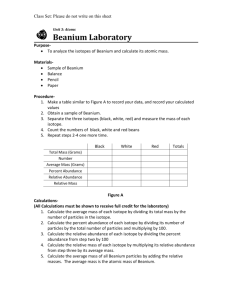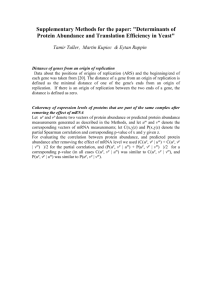Article title: Development and testing of an index of biological
advertisement
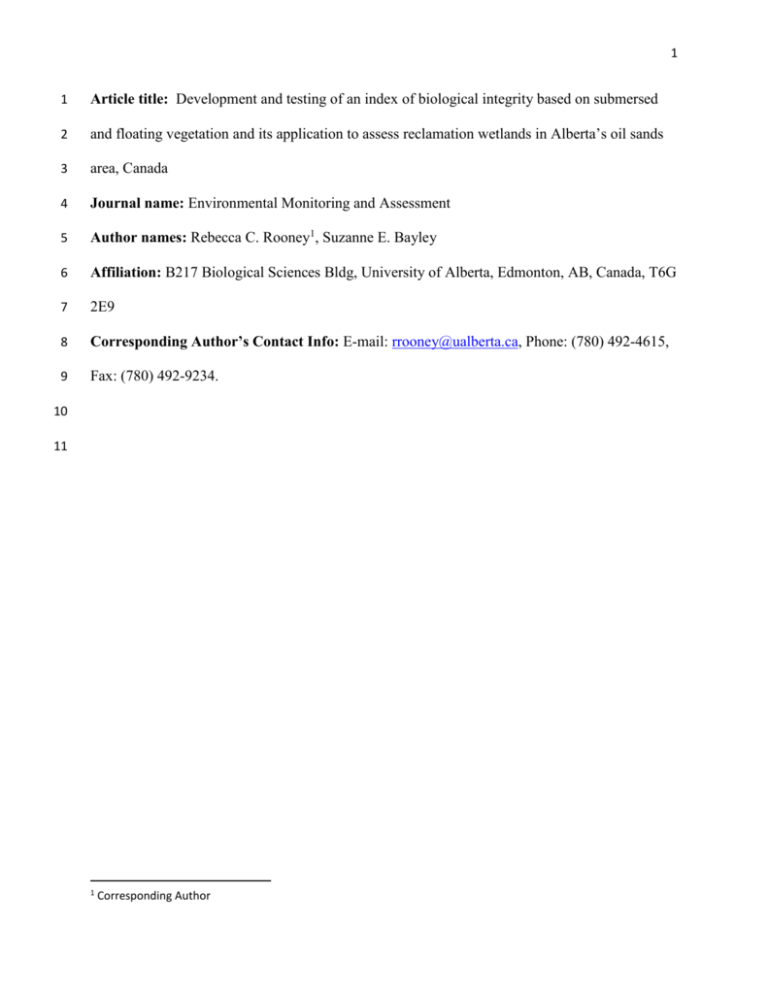
1 1 Article title: Development and testing of an index of biological integrity based on submersed 2 and floating vegetation and its application to assess reclamation wetlands in Alberta’s oil sands 3 area, Canada 4 Journal name: Environmental Monitoring and Assessment 5 Author names: Rebecca C. Rooney1, Suzanne E. Bayley 6 Affiliation: B217 Biological Sciences Bldg, University of Alberta, Edmonton, AB, Canada, T6G 7 2E9 8 Corresponding Author’s Contact Info: E-mail: rrooney@ualberta.ca, Phone: (780) 492-4615, 9 Fax: (780) 492-9234. 10 11 1 Corresponding Author 2 12 Appendix 1 Definitions of candidate metrics calculated from the submersed and floating 13 vegetation. Metric Definition FLT_S Richness of floating species SAV_S Richness of submersed aquatic species TOT_S Richness of floating and submersed aquatic species H' Shannon entropy = -∑ (p ln p) for each species at the pond level H'_ED The "true diversity" according to the Shannon entropy index (weighs species according to their frequencies) S_Quad The number of species observed in all quadrats summed together Hmax ln(S) within each pond, where S is the sum of species used to calculate H' EH H' / Hmax; the evenness of plant species abundances within the pond G_Simp Gini-Simpson diversity index: 1 - (Sum of squares of species frequencies) G_Simp_ED The "true diversity" according to the Gini-Simpson index No._Rare_taxa Number of regionally rare taxaa: Ruppia cirrhosa, Utricularia minor, Potamogeton foliosus, P. natans, and P. obtusifolius %_Rare_taxa Percent of total species richness comprised of regionally rare species %C_Rare_taxa Relative abundance of regionally rare species %_Common_taxa Percent of total species richness comprised of common species %C_Common_taxa Relative abundance of common species H'_ED/G_Simp_ED A measure of dominance FQAIb R/SQRT(N), where R is Sum_C and N is the number of native vascular plant species 3 Sum_C Sum of coefficients of conservatism values on a presence/absence basis Med_C Median coefficient of conservatism value Mean_C Mean coefficient of conservatism value %C_Annual Relative abundance of annual vascular plants %C_Perennial Relative abundance of perennial vascular plants %C_Non-native Relative abundance of non-native plants %C_Native Relative abundance native plants %C_Carnivorous Relative abundance of carnivorous plants %C_Halophyte Relative abundance of salt tolerant plants: R. cirrhosa, Z. palustris, S. pectinata, Chara spp. %C_Alkali Relative abundance of alkali-loving plants: P. alpinus, P. foliosus, P. zosteriformis, S. pectinata, Z. palustris, Chara spp. %C_Monocots Relative abundance of monocots %C_Dicots Relative abundance of dicots %C_Float_Leaf Percent cover of floating leafed plants %C_Sparse_Leaf Relative abundance of sparse leaved submersed plants: R. cirrhosa, Z. palustris, P. natans, P. nodosus, P. alpinus, Ranunculus spp. %_Annual Percent of TOT_S comprised of annual species %_Perennial Percent of TOT_S comprised of perennials %_Non-native Percent of TOT_S comprised of non-native plants %_Native Percent of TOT_S comprised of native plant species %_Carnivorous Percent of TOT_S comprised of carnivorous plants %_Halophyte Percent of TOT_S comprised of salt tolerant species 4 %_Alkali Percent of TOT_S comprised of alkali-loving plants %_Monocots Percent of TOT_S comprised of monocots %_Dicots Percent of TOT_S comprised of dicots %_Float_Leaf Percent of TOT_S comprised of floating leafed plants %_Sparse_Leaf Percent of TOT_S comprised of sparse leaved submersed species P-A_Rcirrhosac Presence/absence of R. cirrhosa (a disturbed community) P-A_aqua_moss Presence/absence of aquatic moss (a reference community) P-A_Cdemersum Presence/absence of C. demersum (a reference community) P-A_Chara Presence/absence of Chara spp. (a disturbed community) %C_Umacrorhiza Relative abundance of U. macrorhiza (a reference community) %C_Cdemersum Relative abundance of C. demersum %C_Chara Relative abundance of Chara spp. %C_Myriophyllum Relative abundance of Myriophyllum spp. (a disturbed community) %C_Ppusillus Relative abundance of P. pusillus (a disturbed community) %C_Potamogetons Relative abundance of Potamogeton spp. (a disturbed community) %_Umacrorhiza Percent of TOT_S comprised of U. macrorhiza %_C.demersum Percent of TOT_S comprised of C. demersum %_Chara Percent of TOT_S comprised of Chara spp. %_Myriophyllum Percent of TOT_S comprised of Myriophyllum spp. %_Ppusillus Percent of TOT_S comprised of P. pusillus %_Potamogetons Percent of TOT_S comprised of Potamogeton spp. Med_SAV_Dens Median SAV biomass rating calculated from the 10 quadrats Overall_SAV_Dens Estimate of overall SAV biomass rating 5 14 a Rarity is as defined by Kershaw et al. (2001) 15 b FQAI is following the method described in (Forrest 2010) 16 c contribution of species to reference versus degraded communities is derived from Rooney and 17 Bayley (2011) 18 References 19 Kershaw L., Gould J., Johnson D.L. and Lancaster J. (eds.) 2001. Rare vascular plants of 20 21 Alberta. University of Alberta Press / Canadian Forest Service, Edmonton, Alberta. Forrest A. 2010. Created stormwater wetlands as wetland compensation and a floristic quality 22 approach to wetland condition assessment in central Alberta, University of Alberta: 23 Edmonton, AB. 24 Rooney R.C. and Bayley S.E. 2011. Setting reclamation targets and evaluating progress: 25 submersed aquatic vegetation in natural and post-oil sands mining wetlands in Alberta, 26 Canada. Ecological Engineering 37: 569-579. 27 28

